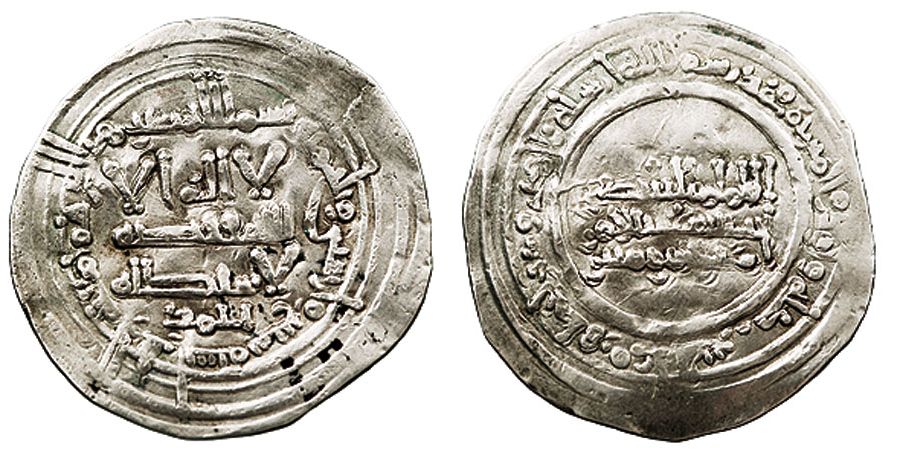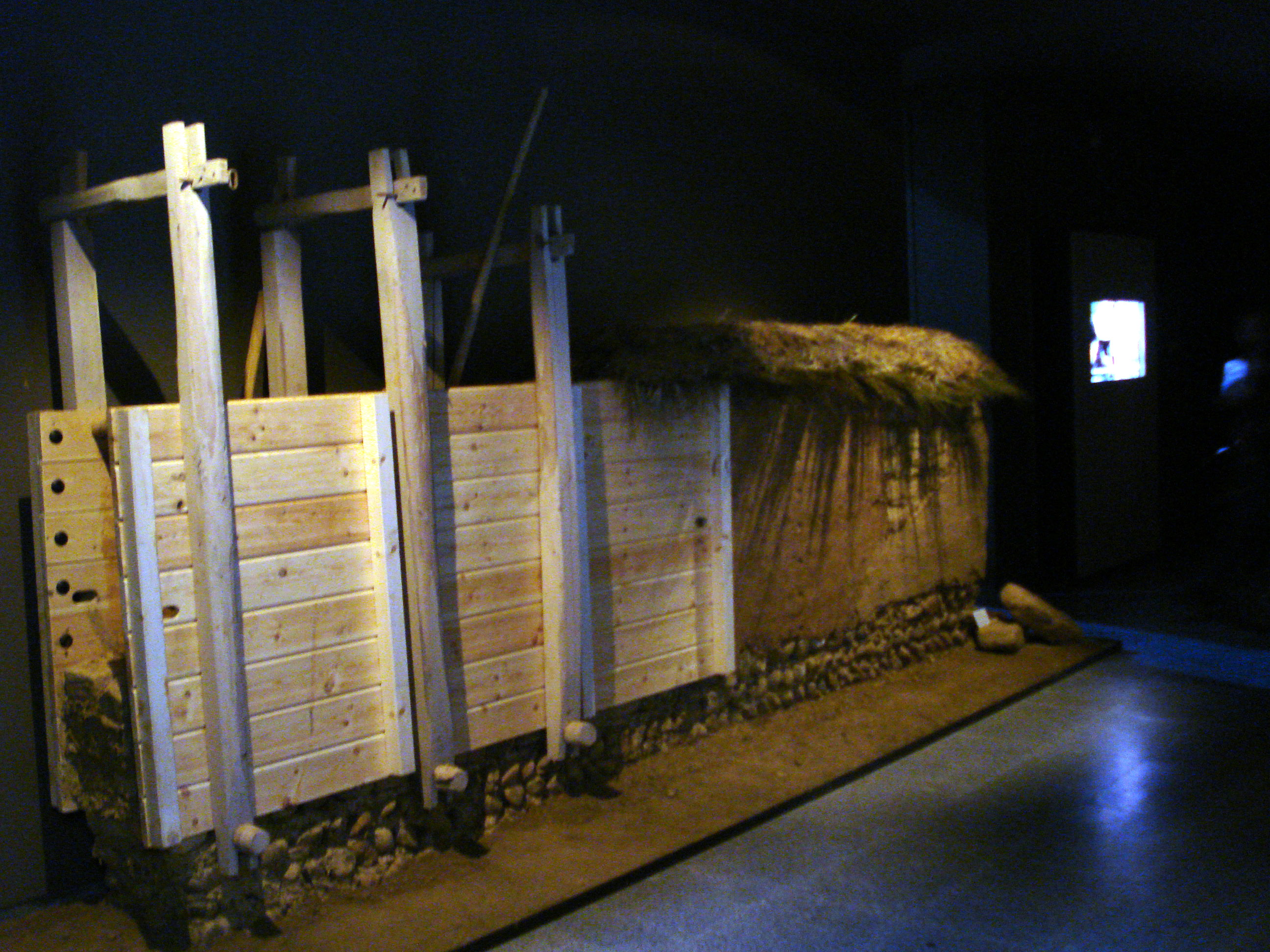|
Buhaira Gardens
The Buhaira Gardens, also known as the Buhaira Palace or the ''Buḥayra'' (transliteration of ), is a former Almohad garden and palace in Seville, Spain. It was created in the 12th century. After the ''Reconquista'' it was also known in Spanish as the Huerta del Rey ("Garden of the King") or Huerta Dabenahofar in its later history. It is now a public park and historic site. Name The name ''buhaira'' is from the Arabic word ''buḥayra'' (), meaning "little sea". This name was used for many gardens and country estates during the Almohad period (12th-13th centuries) that featured artificial lakes or reservoirs. Historical Arabic sources also used this name for the Agdal Gardens of Marrakesh (Morocco), for example. History The construction of the ''Buḥayra'' complex was begun in 1171 on the orders of the Almohad caliph Abu Yaqub Yusuf (r. 1163–1184), who also commissioned many other construction and renovation projects throughout Seville, including the new Great Mosque (lat ... [...More Info...] [...Related Items...] OR: [Wikipedia] [Google] [Baidu] |
Palacio De Los Jardines De La Buhaira (5000018808)
Palacio (''palace'') is a Spanish language, Spanish habitational name. It may have originated from many places in Spain, especially in Galicia (Spain), Galicia and Asturies. Notable people with the surname include: *Agustina Palacio de Libarona (1825-1880), Argentine writer, storyteller, heroine *Alberto Palacio, engineer *Alfredo Palacio, former president of Ecuador *Andy Palacio, Belizean musician *Emilio Palacio, Ecuadorian journalist *Ernesto Palacio, opera singer *Héctor Palacio, Colombian road racing cyclist *Milt Palacio, basketball player *Rodrigo Palacio, footballer *R. J. Palacio, American writer of the 2012 children's novel ''Wonder (R.J. Palacio novel), Wonder'' See also * Palacios (other) References {{surname, Palacio Surnames of Spanish origin ... [...More Info...] [...Related Items...] OR: [Wikipedia] [Google] [Baidu] |
Roman Aqueduct
The Romans constructed aqueducts throughout their Republic and later Empire, to bring water from outside sources into cities and towns. Aqueduct water supplied public baths, latrines, fountains, and private households; it also supported mining operations, milling, farms, and gardens. Aqueducts moved water through gravity alone, along a slight overall downward gradient within conduits of stone, brick, concrete or lead; the steeper the gradient, the faster the flow. Most conduits were buried beneath the ground and followed the contours of the terrain; obstructing peaks were circumvented or, less often, tunneled through. Where valleys or lowlands intervened, the conduit was carried on bridgework, or its contents fed into high-pressure lead, ceramic, or stone pipes and siphoned across. Most aqueduct systems included sedimentation tanks, which helped to reduce any water-borne debris. Sluices, ''castella aquae'' (distribution tanks) and stopcocks regulated the supply to individ ... [...More Info...] [...Related Items...] OR: [Wikipedia] [Google] [Baidu] |
Generalife
The Generalife (; ar, جَنَّة الْعَرِيف, translit=Jannat al-‘Arīf) was a summer palace and country estate of the Nasrid rulers of the Emirate of Granada in Al-Andalus. It is located directly east of and uphill from the Alhambra palace complex in Granada, Spain. Etymology The most commonly cited etymology for the name "Generalife" is that it derives from ''jannat al-‘arīf'' ( ar, جَنَّة الْعَرِيف, translit=) which may variously mean "Garden of the Architect", "Garden of the Artist", "Garden of the Gnostic", or even "Garden of the Flautist". According to Robert Irwin, however, this traditional etymology is unlikely and the true origin of the name is not clearly known. An earlier version of the name recorded in the 16th century by Marmol was ''Ginalarife'', which J.D. Latham suggests is evidence that the first word was originally ''jinan'' (; a plural version derived from the same root), not ''jannat''. The original name of the Generalife ... [...More Info...] [...Related Items...] OR: [Wikipedia] [Google] [Baidu] |
Partal Palace
Partal Palace () is a palatial structure inside the Alhambra fortress complex located in Granada, Spain. It was originally built in the early 14th century by the Nasrid ruler Muhammad III, making it the oldest surviving palatial structure in the Alhambra. Etymology The name Partal comes from Arabic ''al-Barṭal'' or ''al-Burtāl'' ( or ). This word was an Arabisation of the Latin word ''portale'' ('portal') that was used in Old Castilian to mean "portico". History The Partal Palace was built by the Nasrid ruler Muhammad III who ruled the Emirate of Granada, the last Muslim state in Al-Andalus (the Iberian Peninsula), from 1302 to 1309. This dating makes it the oldest remaining palace in the Alhambra today. It was also the first of several palaces that were eventually built along the northern perimeter of the Alhambra. Another palace, called the '' Palacio del Partal Alto'' by archeologists, once stood to the south in an area now occupied by gardens. Though traditionally a ... [...More Info...] [...Related Items...] OR: [Wikipedia] [Google] [Baidu] |
Emirate Of Granada
) , common_languages = Official language: Classical ArabicOther languages: Andalusi Arabic, Mozarabic, Berber, Ladino , capital = Granada , religion = Majority religion: Sunni IslamMinority religions:Roman CatholicismJudaism , leader1 = Muhammad I , leader2 = Muhammad XII , year_leader1 = 1238–1273 , year_leader2 = 1487–1492 , title_leader = Sultan , today = , stat_year1 = 1314 , stat_pop1 = 200,000 , ref_pop1 = The Emirate of Granada ( ar, إمارة غرﻧﺎﻃﺔ, Imārat Ġarnāṭah), also known as the Nasrid Kingdom of Granada ( es, Reino Nazarí de Granada), was an Islamic realm in southern Iberia during the Late Middle Ages. It was the last independent Muslim state in Western Europe. Muslims had been present in the Iberian Peninsula, which they called ''Al-Andalus'', since the early eighth cent ... [...More Info...] [...Related Items...] OR: [Wikipedia] [Google] [Baidu] |
Madinat Al-Zahra
Madinat al-Zahra or Medina Azahara ( ar, مدينة الزهراء, translit=Madīnat az-Zahrā, lit=the radiant city) was a fortified palace-city on the western outskirts of Córdoba in present-day Spain. Its remains are a major archaeological site today. The city was built in the 10th century by Abd-ar-Rahman III (912–961), a member of the Umayyad dynasty and the first caliph of Al-Andalus. It served as the capital of the Caliphate of Córdoba and its center of government. The main reason for its construction was politico-ideological: Abd ar-Rahman III had declared himself "caliph" in 929 and the dignity of this new title required the establishment of a new city, a symbol of his power, imitating other eastern Caliphates. It sought to demonstrate his superiority over his great rivals, the Fatimid Caliphs of Ifriqiya in North Africa and the Abbasid Caliphs in Baghdad. The city was built near Córdoba, the existing capital of al-Andalus under Umayyad rule. Construction began in ... [...More Info...] [...Related Items...] OR: [Wikipedia] [Google] [Baidu] |
Andrea Navagero
Andrea Navagero (Venice, 1483 – Blois, 8 May 1529) was an Italian poet, orator, botanist, and official historian of the Republic of Venice. He was born to a noble family of Venice, and became a member of the Maggior Consiglio in 1504. He studied classical literature and languages in Venice and Padua. In Venice, he worked with the publishing house (Aldina or Aldine Press) and academy established by Manuzio, but for a few decades after 1515, run by Andrea Torresano. Navagero was much in demand for writing elegies of famous individuals, including Caterina Cornaro Catherine Cornaro ( el, Αικατερίνη Κορνάρο, vec, Catarina Corner) (25 November 1454 – 10 July 1510) was the last monarch of the Kingdom of Cyprus, also holding the titles of the Queen of Jerusalem and Armenia. She was queen ..., Marcantonio Coccio Sabellico, Doge Leonardo Loredan, and Giovanni Jacopo Trivulzio. He aided the Aldine press in the publication of codicils of classic authors such as Ci ... [...More Info...] [...Related Items...] OR: [Wikipedia] [Google] [Baidu] |
Arcade (architecture)
An arcade is a succession of contiguous arches, with each arch supported by a colonnade of columns or piers. Exterior arcades are designed to provide a sheltered walkway for pedestrians. The walkway may be lined with retail stores. An arcade may feature arches on both sides of the walkway. Alternatively, a blind arcade superimposes arcading against a solid wall. Blind arcades are a feature of Romanesque architecture that influenced Gothic architecture. In the Gothic architectural tradition, the arcade can be located in the interior, in the lowest part of the wall of the nave, supporting the triforium and the clerestory in a cathedral, or on the exterior, in which they are usually part of the walkways that surround the courtyard and cloisters. Many medieval arcades housed shops or stalls, either in the arcaded space itself, or set into the main wall behind. From this, "arcade" has become a general word for a group of shops in a single building, regardless of the architect ... [...More Info...] [...Related Items...] OR: [Wikipedia] [Google] [Baidu] |
Buttress
A buttress is an architectural structure built against or projecting from a wall which serves to support or reinforce the wall. Buttresses are fairly common on more ancient buildings, as a means of providing support to act against the lateral (sideways) forces arising out of inadequately braced roof structures. The term ''counterfort'' can be synonymous with buttress and is often used when referring to dams, retaining walls and other structures holding back earth. Early examples of buttresses are found on the Eanna Temple (ancient Uruk), dating to as early as the 4th millennium BC. Terminology In addition to flying and ordinary buttresses, brick and masonry buttresses that support wall corners can be classified according to their ground plan. A clasping or clamped buttress has an L shaped ground plan surrounding the corner, an angled buttress has two buttresses meeting at the corner, a setback buttress is similar to an angled buttress but the buttresses are set back from ... [...More Info...] [...Related Items...] OR: [Wikipedia] [Google] [Baidu] |
Rammed Earth
Rammed earth is a technique for constructing foundations, floors, and walls using compacted natural raw materials such as earth, chalk, lime, or gravel. It is an ancient method that has been revived recently as a sustainable building method. Under its French name of pisé it is also a material for sculptures, usually small and made in molds. It has been especially used in Central Asia and Tibetan art, and sometimes in China. Edifices formed of rammed earth are on every continent except Antarctica, in a range of environments including temperate, wet, semiarid desert, montane, and tropical regions. The availability of suitable soil and a building design appropriate for local climatic conditions are the factors that favour its use. The French term "pisé de terre" or "terre pisé" was sometimes used in English for architectural uses, especially in the 19th century. The process Making rammed earth involves compacting a damp mixture of subsoil that has suitable pro ... [...More Info...] [...Related Items...] OR: [Wikipedia] [Google] [Baidu] |
Mudéjar Art
Mudéjar art, also known as Mudéjar style, refers to a type of ornamentation and decoration used in the Iberian Christian kingdoms, primarily between the 13th and 16th centuries. It was applied to Romanesque, Gothic, and Renaissance architectural styles as constructive, ornamental, and decorative motifs derived from those that had been brought to or developed in Al-Andalus. These motifs and techniques were also present in the art and crafts, especially Hispano-Moresque lustreware that was once widely exported across Europe from southern and eastern Spain at the time. The term ''Mudejar art'' was coined by the art historian José Amador de los Ríos y Serrano in reference to the ''Mudéjars'' who played a leading role in introducing Islamic derived decorative elements into the Iberian Christian kingdoms. The Mudéjars were those Muslims who remained in the former areas of Al-Andalus after Christian reconquest in the Middle Ages but who were not initially converted to Christian ... [...More Info...] [...Related Items...] OR: [Wikipedia] [Google] [Baidu] |
.jpg)








